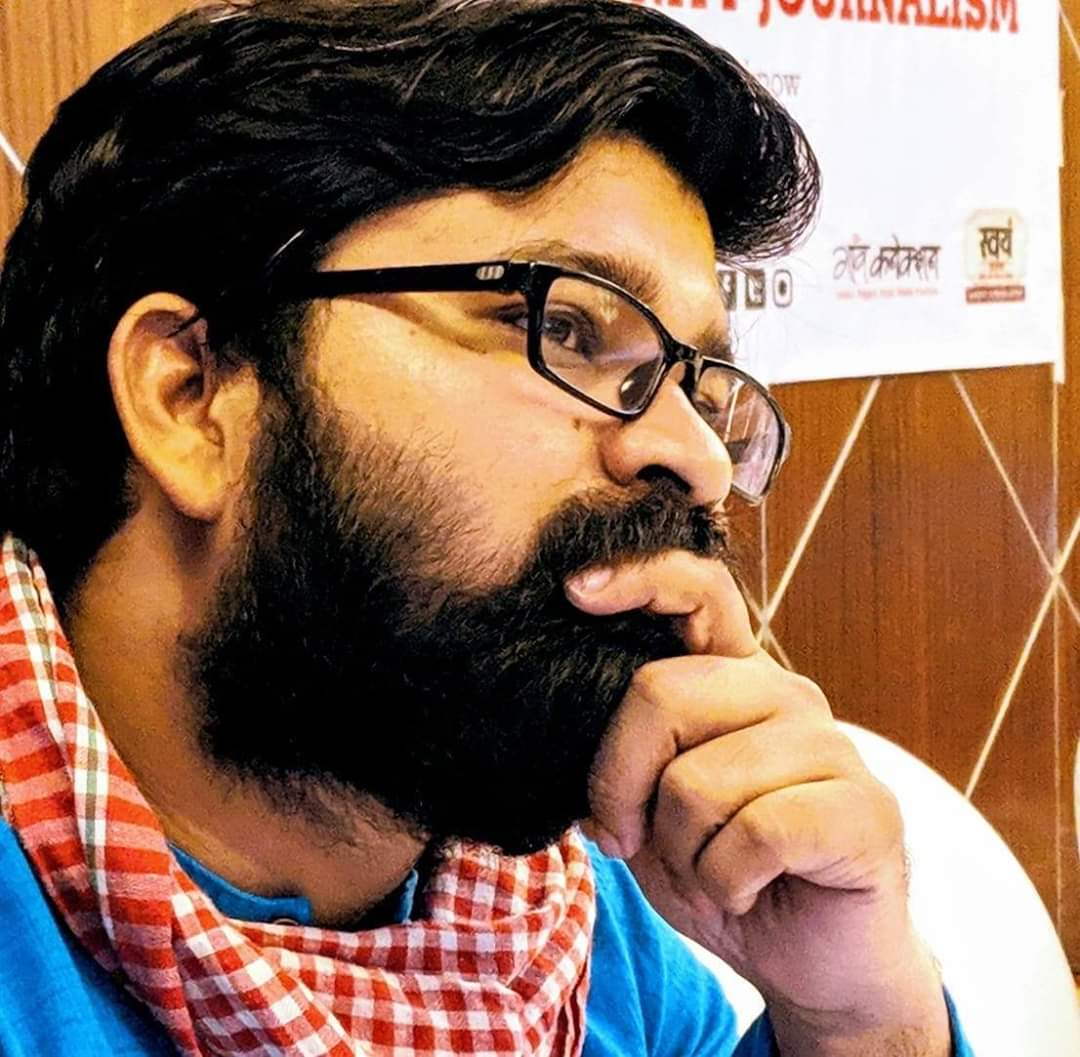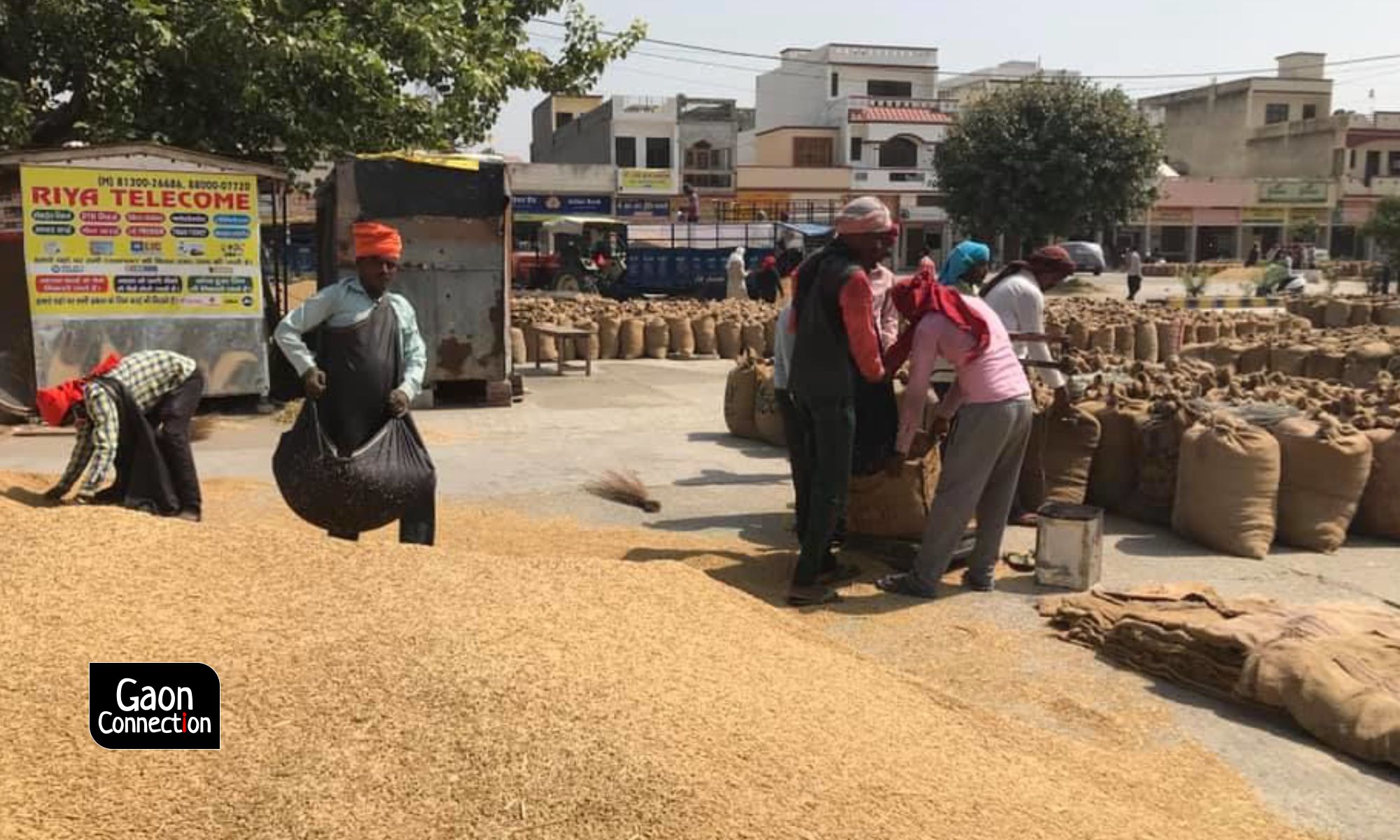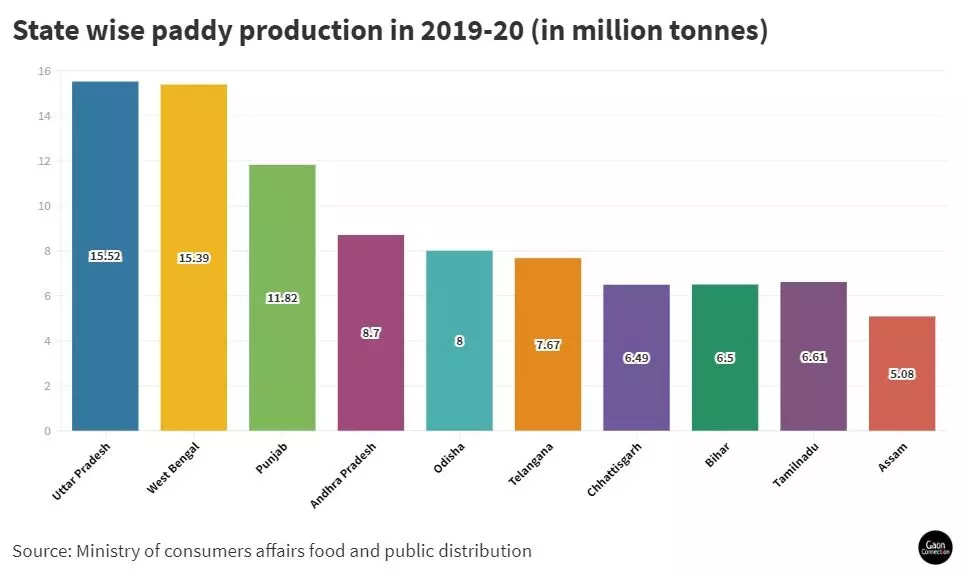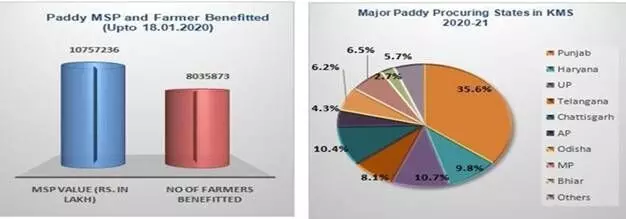More farmers in Telangana and Madhya Pradesh benefit from MSP than those in Punjab and Haryana
In the Kharif season of 2019-20, paddy was procured at MSP from 1.98 million farmers of Telangana versus 1.16 million farmers of Punjab, notes a Union ministry of consumer affairs, food and public distribution report. MSP benefits aren't limited to Punjab and Haryana farmers alone.


In the debate about the ongoing farmers’ agitation against the three new farm laws, an oft-raised point is that most farmers who are protesting are from Punjab and Haryana, because the assumption is that they benefit the most from the minimum support price (MSP). However, this is not quite correct.
Government figures show that although the procurement of paddy and wheat at MSP, which protects farmers from fluctuations in crop prices in the open market, is the highest in Punjab and Haryana, in terms of the number of farmers receiving the benefit of MSP, Telangana and Madhya Pradesh lead the way. One of the possible reasons for this could be the larger landholdings in Punjab and Haryana. A report in The Indian Express said that while Nagaland has the largest average farm size, Punjab and Haryana rank second and third, respectively.
Also read: Battle for MSP: Punjab and Haryana’s farmers fear their robust mandi system will collapse
A report of the ministry of consumer affairs, food and public distribution revealed that paddy from 1.98 million farmers of Telangana was procured by the government in the Kharif season of 2019-20. In second place was Haryana, where 1.89 million farmers sold paddy at the government rate. In contrast, in Punjab, which is at fifth place, only 1.16 million farmers were provided MSP for paddy.
When it came to wheat, in the Rabi season of 2020-21, the government of Madhya Pradesh procured wheat at MSP from 1.59 million farmers, the highest in the country. The corresponding numbers for Punjab and Haryana were 1.04 million and 0.78 million farmers, respectively.
In the Kharif seasons between 2015-16 and 2019-20, the highest number of farmers selling paddy at MSP was in Chhattisgarh (16.8 million farmers). Punjab (15.8 million) came second while Haryana (0.41 million) came fifth.
Similarly, in the Rabi season between 2016-17 and 2020-21, 0.47 million farmers of Madhya Pradesh sold wheat at government rate, while 0.44 million farmers of Punjab and 0.37 farmers of Haryana got the benefit of MSP.
These figures show that most farmers who availed MSP are from states other than Punjab and Haryana. Yet, every time the subject of MSP or procurement arises, Punjab and Haryana are at the forefront of discussions.
A January 2016 report of NITI Aayog mentions that only six per cent of farmers get the benefit of MSP. Of this, farmers from Punjab and Haryana comprise a large percentage, as MSP procurement of paddy and wheat from these two states is the highest. In Punjab, around 97 per cent of paddy and 75-80 per cent of wheat is procured by the government.
The MSP for any crop is uniform across the country and is fixed by the Ministry of Agriculture, Government of India based on the recommendations of the Commission for Agricultural Costs and Prices (CACP). At present, 23 crops are being procured at MSP. These include wheat, paddy, sorghum, cotton, bajra, maize, moong, groundnut, soybean and sesame.
While the common assumption is that the highest procurement of paddy and wheat at the government rate is from Punjab and Haryana, in fact, it is Telangana that leads the tally of paddy procurement at MSP. In 2019-20, Telangana produced 7.678 million tonnes of paddy, out of which 97.08 per cent (7.454 million tonnes) was procured at MSP. Out of 11.823 million tonnes of paddy produced in Punjab, 91.99 per cent (10.876 million tonnes) was procured, and of the 4.824 million tonnes of paddy produced in Haryana, 89.20 per cent (4.303 million tonnes) were procured at the government rate.
For the year 2019-2020, the Uttar Pradesh government procured 24.42 per cent of the total paddy produced at MSP. The government procurement was 36.2 per cent in Madhya Pradesh and 10.59 per cent in West Bengal. In 2019-20, 18.207 million tonnes of wheat was produced in Punjab, out of which 69.83 per cent — 12.714 million tonnes — was procured at MSP.
Madhya Pradesh’s wheat production (18.583 million tonnes) is higher than Punjab’s but its procurement is only 69.91 per cent (12.935 million tonnes). Haryana stood third with 61.28 per cent procurement of total production, Rajasthan fourth with 21.04 per cent and Uttar Pradesh fifth with 11.15 per cent procurement.

Punjab and Haryana, however, manage the highest procurement at MSP because of their robust mandi (market) system. There is a mandi every five to six kilometres in Punjab. According to a report in The Indian Express, there are about 1,850 procurement centres, 152 large mandis (foodgrain mandis) and 28,000 registered brokers in Punjab. About 200,000 to 300,000 labourers work to sort, pack and transport material from these mandis, which procure harvest from two million farmers.
Why are other states lagging behind? Devinder Sharma, food and export policy expert based out of Mohali, Punjab, has been associated with the farmers of Punjab and Haryana for long. “When Sharad Pawar was union agriculture minister, he had said in Parliament that seventy one per cent of people do not know about MSP. For them, there is no benefit, only struggle. They are dependent on the open market. Had the governments developed the mandi [market] network, they too would have derived benefit from MSP.” he told Gaon Connection.
Paddy procurement under Kharif marketing season 2020-21 is going on in several states of the country. As per data from the agricultural department, till January 16, 2021, more than 56.417 million metric tonnes of paddy have been procured. Of this, Punjab has a share of 35.9 per cent, Uttar Pradesh 10.7 per cent, Chhattisgarh 10.5 per cent, and Haryana 9.9 per cent. Paddy is also being procured in other major paddy producing states such as West Bengal and Bihar, but these states do not feature on the list.

Amal Haldar, West Bengal secretary of the All-India Kisan Sabha, told Gaon Connection that farmers in rural areas are not aware of the official paddy procurement process. “The broker system prevails in most areas of Bengal. There are middlemen who seek to buy paddy at a lower price from the farmers. That is why government paddy procurement is very low.”

